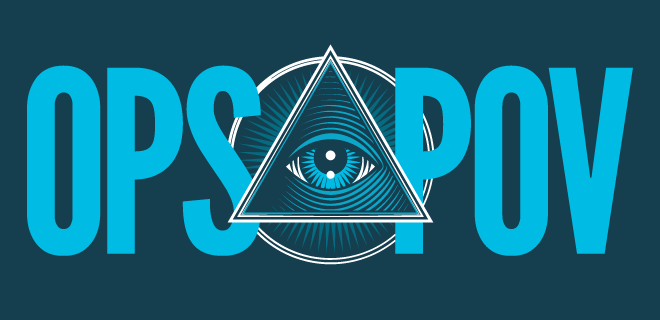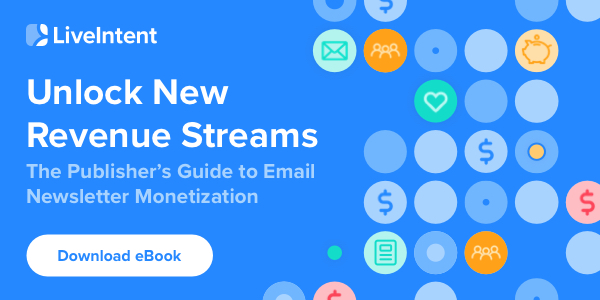
With the impending death of the cookie, there’s been a spate of email newsletter acquisitions (and launches) signaling a renewed interest—from publishers and marketers alike—in the channel’s potential for improving first-party data strategies and growing revenue, while at the same time building deeper and more engaging relationships with audiences.
I reached out to LiveIntent’s CMO Kerel Cooper to learn what he thinks of the current newsletter surge, why the email address is key to resolving identity, and what his predictions are for the future of email newsletters. LiveIntent powers newsletter monetization for top publishers and brands like The New York Times and General Mills.
There’s been a flurry of activity in the newsletter space. HubSpot is acquiring The Hustle, Forbes is launching a SubStack-like platform for journalists and even Facebook is planning to offer newsletter tools for independent journalists, while Twitter acquired Revue to launch a similar endeavor.
Lynne d Johnson: What’s going on here? Why, all of a sudden is there such fervent interest in playing in this space where millennial-minded newsletters like MorningBrew and theSkimm have flourished?
 Kerel Cooper: I think it’s important to remember that email newsletters have been a growing trend for some time now. A 2017 Adobe study showed that people spend more than 5 hours per day in email (between personal and professional). This consumption has no doubt increased during the COVID pandemic as people are at home, looking for ways to consume trusted content without the noise.
Kerel Cooper: I think it’s important to remember that email newsletters have been a growing trend for some time now. A 2017 Adobe study showed that people spend more than 5 hours per day in email (between personal and professional). This consumption has no doubt increased during the COVID pandemic as people are at home, looking for ways to consume trusted content without the noise.
53% of publishers LiveIntent surveyed in 2020 said they are experiencing an increase in engagement with their email newsletters. From a consumer perspective, in many ways, email newsletters have replaced newspapers and magazines. People are getting that information delivered to their inbox vs it being dropped off on their doorstep.
In the short-term: publishers and marketers want to make sure they provide content and products in a way that keeps up with this trend. It’s sort of the next phase for these companies related to building engagement, interaction and time spent with their brand. In the long-term: everyone understands that email will be the key to Identity in a first-party world. What these new entrants understand is the sheer superpower of the email address and they are developing strategies to be more dexterous with it.
LdJ: With the cookie going away, can you talk about the key role the email address plays in solving for identity while also providing publishers with an alternative revenue stream?
KC: The email address is inherent to a holistic first-party data strategy. It is an individual’s digital passport: everyone uses it to login to social, make online purchases, subscribe to content, and login into streaming services. As we prepare for the death of the third-party cookie, the email address will continue to be a foundational element for building first-party data strategies.
At LiveIntent, we are leveraging our 12 years of experience of operating in an environment that is 100% logged in and consent-based (email newsletters) to help our partners understand how email is key to their strategy. What’s most important for publishers right now is to adopt and test various technologies and strategies. That way, when the demand starts to flow in a big way, they are ready to capture it.
Our specific solution set will help publishers increase the percentage of identifiable website visitors, across browsers and devices. Through our solution set, publishers can also activate first-party data at scale by creating custom audiences to offer to advertisers which will ultimately lead to better monetization and revenue streams.
LdJ: Along with beefing up first-party data strategies as a key to the future, a lot of marketers and pubs are also trying to understand what’s happening with the Privacy Sandbox. As well, there’s a lot of hope pinned on Unified ID 2.0, which is built from hashed and encrypted email addresses.
I’m sure not just one of these solutions will be a cure-all. Shouldn’t the industry be thinking about a combined or portfolio solution?
KC: I’m a big fan of Unified ID 2.0. With that said, I don’t think there will ever be one ring to rule them all (I’m sorry, there are very few books most in our industry have read…) In order to thrive in the new era, Brands and Publishers will have to adopt — and experiment with — different solutions often concurrently, in order to land on a framework that allows them to bring targeting, attribution, measurement, and optimization to their campaigns irrespective of device, channel or platform.
That begs the obvious question: how do brands and publishers work across the many different proprietary IDs that they’ve invested in and see value from other standard IDs in the ecosystem like UDID, IDL, etc.? LiveIntent built its solution with this in mind. We know the market doesn’t want another ID, they simply want to connect their first-party and third-party data to the ecosystem using media assets they already own and control. Data science teams don’t like modeled data because it adds noise and error rates. Our solution has a 1:1 relationship with the hashed email address. Meaning, LiveIntent’s Identity framework allows anyone with CRM data or first-party cookies to increase the resolution of the sundry IDs on the market.
LdJ: I want to revisit this email boom that’s happening for a minute. What are your overall predictions for the future of newsletters?
Are more publishers going to launch newsletter platforms? And, as pubs continue to refocus on contextual, will we start to see more personalized newsletters matched with more relevant advertising?
KC: Most traditional Publishers have already heavily invested in newsletters. For the most part, they see it as a way to have their cake while eating it, too. The email newsletter functions, for them, as their own logged-in media channel that operates outside of the purview of the walled gardens. They know the future of their revenue will be a mix of subscription revenues and revenues from delivering advertising without third-party cookies.
The interplay of data between an email open and a click to a story forms the basis for many dynamic paywall models, so the email newsletter is crucial for subscriptions. The industry also knows that no matter which ID frameworks they embrace as the third-party cookie deprecates, their own email and first-party data assets will be the key to controlling their destiny and bringing demand onto their inventory in the future. Email programs let them do both, and with LiveIntent, they’re able to earn revenue while they build up their first-party assets for an Identity-focused future and focus on selling subscriptions.
The biggest change we’re seeing in the email newsletter space is that brands are mimicking what Publishers have pioneered on the newsletter front.
Brands who traditionally don’t have a vast email asset (Big Box retailers or CPG companies, for example) due to the nature of brick-and-mortar stores being a traditional intermediary for their goods, have embraced the importance of direct relationship with their customers and many are seeing the email newsletter as a lucrative vehicle for this.
We’ve seen massive momentum on the CPG and Big Box front. They are both running acquisition campaigns (subscribers) to create their own segments (and have as a future-proofed asset) and running campaigns in their own newsletters (either for their own products or to help supplement their marketing budgets.) The style and content of their newsletters are quirky, engaging, and fun, mimicking their counterparts at Publishers.
